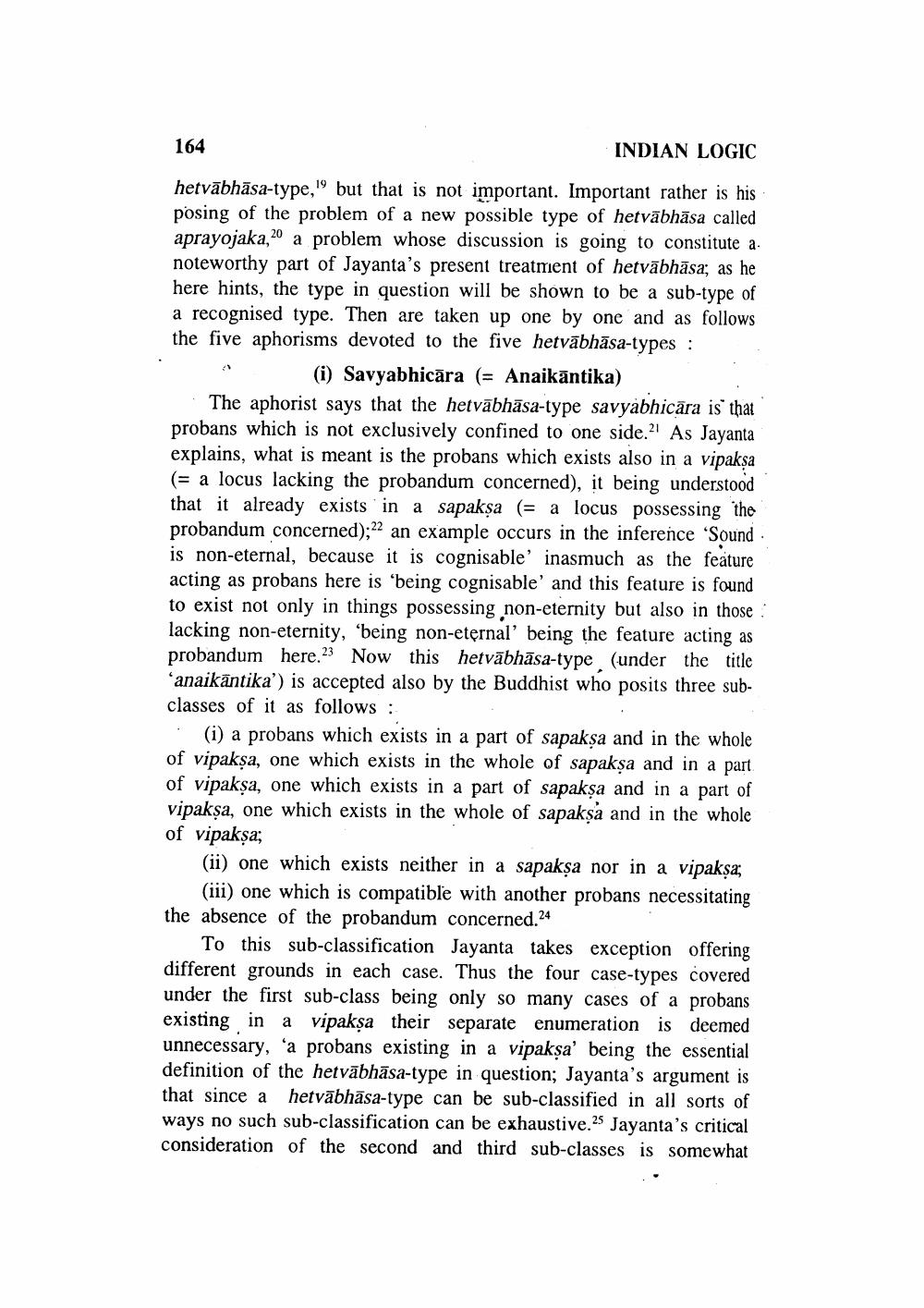________________
INDIAN LOGIC
hetväbhäsa-type," but that is not important. Important rather is his posing of the problem of a new possible type of hetväbhäsa called aprayojaka, a problem whose discussion is going to constitute a noteworthy part of Jayanta's present treatment of hetväbhäsa; as he here hints, the type in question will be shown to be a sub-type of a recognised type. Then are taken up one by one and as follows the five aphorisms devoted to the five hetväbhasa-types:
164
(i) Savyabhicara (= Anaikantika)
The aphorist says that the hetväbhasa-type savyabhicära is that probans which is not exclusively confined to one side." As Jayanta explains, what is meant is the probans which exists also in a vipaksa (a locus lacking the probandum concerned), it being understood that it already exists in a sapaksa (= a locus possessing the probandum concerned); an example occurs in the inference 'Sound is non-eternal, because it is cognisable' inasmuch as the feature acting as probans here is 'being cognisable' and this feature is found to exist not only in things possessing non-eternity but also in those lacking non-eternity, 'being non-eternal' being the feature acting as probandum here. Now this hetväbhasa-type, (under the title 'anaikantika') is accepted also by the Buddhist who posits three subclasses of it as follows:
(i) a probans which exists in a part of sapakṣa and in the whole of vipaksa, one which exists in the whole of sapaksa and in a part of vipaksa, one which exists in a part of sapakṣa and in a part of vipaksa, one which exists in the whole of sapaksa and in the whole of vipakṣa;
(ii) one which exists neither in a sapakṣa nor in a vipaksa (iii) one which is compatible with another probans necessitating the absence of the probandum concerned.24
To this sub-classification Jayanta takes exception offering different grounds in each case. Thus the four case-types covered under the first sub-class being only so many cases of a probans existing in a vipakṣa their separate enumeration is deemed unnecessary, a probans existing in a vipakṣa' being the essential definition of the hetväbhasa-type in question; Jayanta's argument is that since a hetvabhasa-type can be sub-classified in all sorts of ways no such sub-classification can be exhaustive.25 Jayanta's critical consideration of the second and third sub-classes is somewhat




